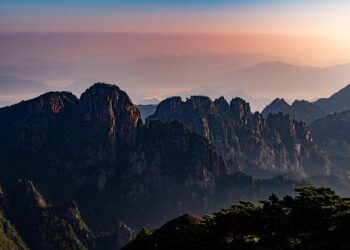SUPPLIED
Bison once roamed North America in herds of tens of millions.
ŌĆ£There are still hard elements,ŌĆØ Hubbard admits.
Singing Back the Buffalo is about the ŌĆ£rematriationŌĆØ of buffalo herds back into North America. It captures the beauty of the buffalo and the majestic plains into which the herds are being reintroduced, but yes, it does take on the tough subjects.
ŌĆ£I will say my work fundamentally is about injustice. I can look at my body of work, every single one, and whether itŌĆÖs a different approach, or IŌĆÖm using a different form of filmmaking, thatŌĆÖs what theyŌĆÖre about.ŌĆØ Hubbard says.
ŌĆ£And this one is no different. We tend to think of justice and injustice only pertaining to human beings, and ultimately, what this film is about (is): What does justice for the buffalo mean?ŌĆØ
The parallel between Indigenous peoples and the buffalo is such that Hubbard uses the term ŌĆ£genocideŌĆØ to describe the buffaloŌĆÖs fate.

SUPPLIED
Filmmaker Tasha Hubbard (left) and Indigenous scholar Leroy Little Bear
ŌĆ£Humans arenŌĆÖt the only people, from an Indigenous perspective. We can think of it that way in the strategic destruction of buffalo ŌĆ” people forget that the destruction of the buffalo was an attack on us as much as it was also an attack on them,ŌĆØ the filmmaker says.
She points out that the same kind of injustices that have been perpetrated on Indigenous people have also been perpetrated on the bison ŌĆö ŌĆ£their lack of freedom, their lack of agency, their lack of territory, the loss of body sovereignty.ŌĆØ
Winnipeg Free Press | Newsletter
That awareness permeates the film, but Hubbard also interlaces it with scenes of stunning natural beauty and hope for a world in which natural balance is restored.
ŌĆ£You have to feel joy,ŌĆØ Hubbard says. ŌĆ£ThatŌĆÖs a big teaching that IŌĆÖve had in the last five years. We need to work to undo injustice. We need to go to the dark places and expose them.
ŌĆ£But part of our human experience is to have those moments of joy and beauty. ItŌĆÖs what sustains us to keep doing that other work.ŌĆØ

SUPPLIED
Bison once roamed all over North America in herds of tens of millions.
After the 7 p.m. screening tonight, the Winnipeg Indigenous Filmmakers Collective will present a conversation about the film with director-mentee Charlene Moore and local filmmaker Amanda Kindzierski.

SUPPLIED
Hubbard parallels the fate of Indigenous peoples and the fate of the bison in her new documentary.

Our newsroom depends on a growing audience of readers to power our journalism. If you are not a paid reader, please consider becoming a subscriber.
Our newsroom depends on its audience of readers to power our journalism. Thank you for your support.
Source link : http://www.bing.com/news/apiclick.aspx?ref=FexRss&aid=&tid=66e5365ddb2b4127ba2c1006f14afce9&url=https%3A%2F%2Fwww.winnipegfreepress.com%2Farts-and-life%2F2024%2F09%2F14%2Fgiving-a-voice-to-the-north-american-buffalo&c=4373870545294506237&mkt=en-us
Author :
Publish date : 2024-09-13 20:01:00
Copyright for syndicated content belongs to the linked Source.












